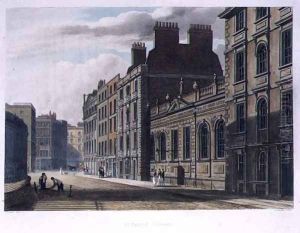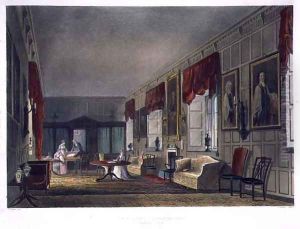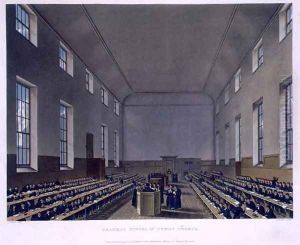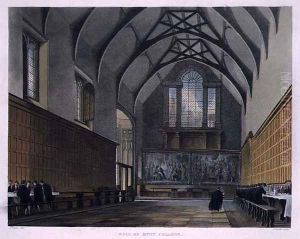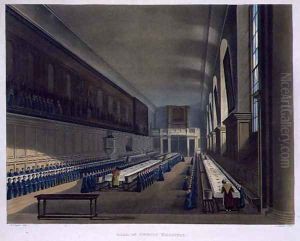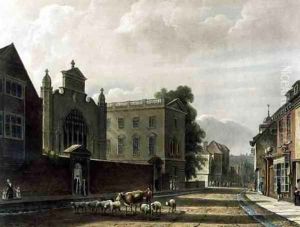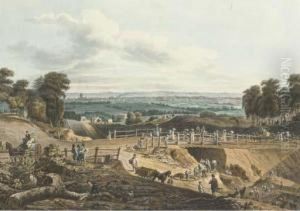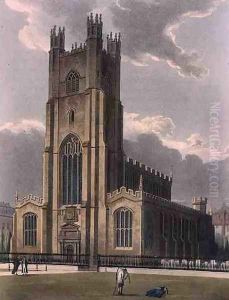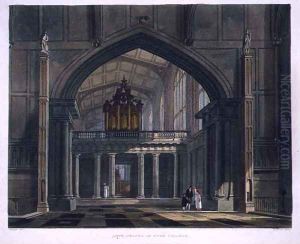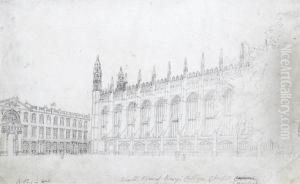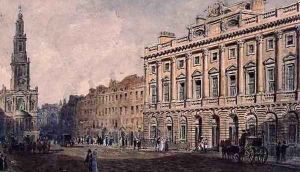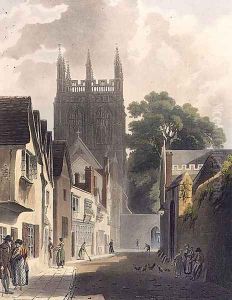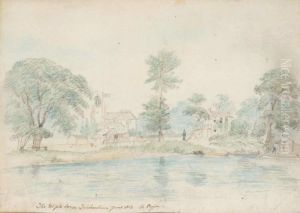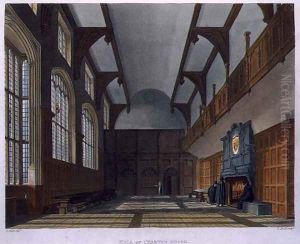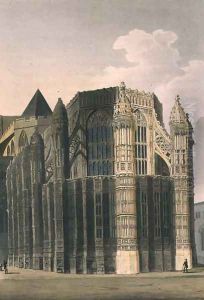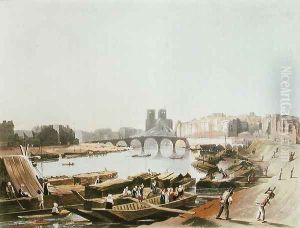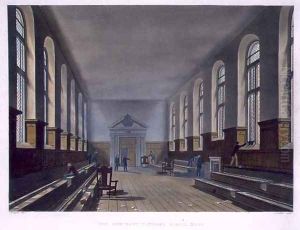





The Merchant Taylors School Room, from History of Merchant Taylors School, part of History of the Colleges, engraved by Joseph Constantine Stadler fl.1780-1812 pub. by R. Ackermann, 1816
-
About Reproduction
Discover the allure of art with our faithful reproduction of "The Merchant Taylors School Room, from History of Merchant Taylors School, part of History of the Colleges, engraved by Joseph Constantine Stadler fl.1780-1812 pub. by R. Ackermann, 1816", originally brought to life by the talented Augustus Charles Pugin. Unlike posters or prints, our hand-painted oil painting breathes an unique sense of depth and texture into your space. Every detail, every stroke, and every texture is meticulously recreated, paying the perfect homage to Augustus Charles Pugin and his artistic vision.
Owning this piece is more than just decoration - it's a statement of your refined taste in art. Let the vibrant colors and intricate details of this replica serve as a daily reminder of the beauty in our world. Elevate your decor and appreciate the richness of art with our replica of this masterpiece.
-
Painting Description
"The Merchant Taylors School Room" is an evocative engraving by Joseph Constantine Stadler, a prominent printmaker active between 1780 and 1812. This particular work was published in 1816 by Rudolph Ackermann, a notable publisher of illustrated books, and was based on the architectural drawings of Augustus Charles Pugin, a distinguished draftsman and artist known for his detailed and precise depictions of buildings and interiors.
The engraving is part of the larger collection titled "History of Merchant Taylors School," which itself is a segment of the extensive series "History of the Colleges." This series aimed to document and celebrate the rich architectural and educational heritage of prominent British institutions. Merchant Taylors' School, one of the Great Nine Schools of England, was founded in 1561 by the Merchant Taylors' Company, a historic livery company in the City of London. The school has a storied history of academic excellence and has produced numerous notable alumni.
Stadler's engraving captures the essence of the school room, reflecting the educational environment of the early 19th century. The meticulous attention to architectural detail showcases the grandeur and solemnity of the space, emphasizing the importance placed on education and learning during this period. The room is depicted with high ceilings, large windows, and rows of desks, creating an atmosphere of scholarly pursuit and intellectual rigor.
Ackermann's publication of this work in 1816 was part of a broader movement to document and disseminate images of Britain's architectural heritage to a wider audience. The collaboration between Stadler and Pugin resulted in a series of engravings that not only served as historical records but also as works of art in their own right. These engravings were highly valued for their accuracy and artistic quality, making them important cultural artifacts of the time.
Overall, "The Merchant Taylors School Room" engraving is a significant piece that offers insight into the educational practices and architectural styles of early 19th-century England. It stands as a testament to the enduring legacy of Merchant Taylors' School and the broader historical and cultural context in which it operated.
-
Lead Time & Shipping
When you order this oil painting replica, it typically takes 2-3 weeks to paint. If the artwork is more complex, it might need a little more time to ensure the best quality. Once it's ready, we'll send you a photo for your approval. After you give the green light, we'll ship it to you for free.
-
Return & Refund
We believe in the quality of our hand-painted oil painting reproductions, and your satisfaction is our priority. If for any reason, you are not completely satisfied with your purchase, we offer a 45-day return policy. You can return your artwork within 45 days of receipt and receive a full refund. Please note that the artwork must be returned in the original packaging and in the same condition as it was received.





